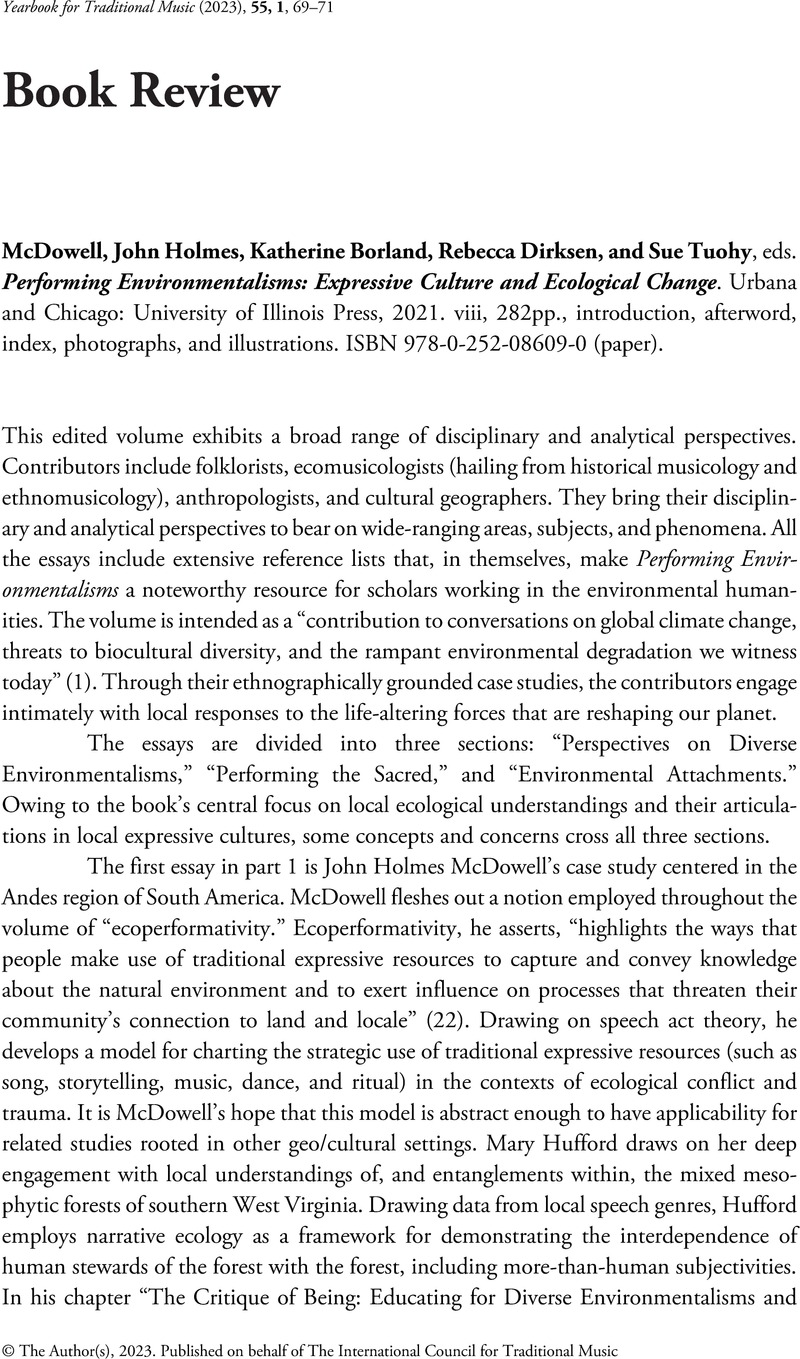No CrossRef data available.
Article contents
John Holmes McDowell, Katherine Borland, Rebecca Dirksen, and Sue Tuohy, eds. Performing Environmentalisms: Expressive Culture and Ecological Change. Urbana and Chicago: University of Illinois Press, 2021. viii, 282pp., introduction, afterword, index, photographs, and illustrations. ISBN 978-0-252-08609-0 (paper).
Review products
John Holmes McDowell, Katherine Borland, Rebecca Dirksen, and Sue Tuohy, eds. Performing Environmentalisms: Expressive Culture and Ecological Change. Urbana and Chicago: University of Illinois Press, 2021. viii, 282pp., introduction, afterword, index, photographs, and illustrations. ISBN 978-0-252-08609-0 (paper).
Published online by Cambridge University Press: 05 December 2023
Abstract
An abstract is not available for this content so a preview has been provided. Please use the Get access link above for information on how to access this content.

- Type
- Book Review
- Information
- Copyright
- © The Author(s), 2023. Published on behalf of The International Council for Traditional Music
References
Baranovitch, Nimrod. 2016. “Ecological Degradation and Endangered Ethnicities: China’s Minority Environmental Discourses as Manifested in Popular Songs.” Journal of Asian Studies 75 (1): 181–205.CrossRefGoogle Scholar
National Oceanic and Atmospheric Administration. 2023. “The World Just Sweltered through Its Hottest August on Record: Both Hemispheres Saw Record-Warm Seasons.” https://www.noaa.gov/news/world-just-sweltered-through-its-hottest-august-on-record (accessed 12 October 2023).Google Scholar


